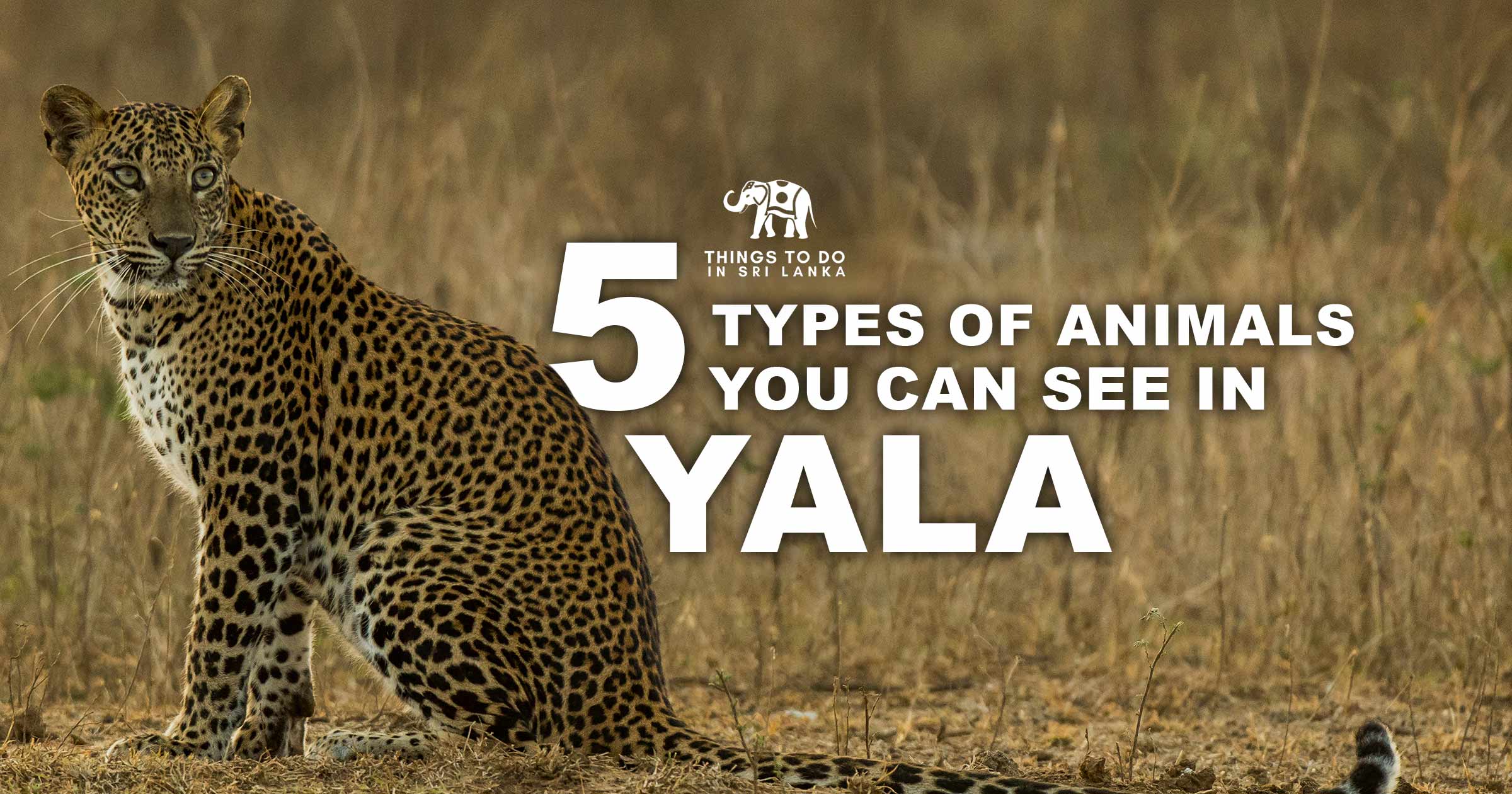
5 types of animals you can see in Yala
The 2nd largest and the most visited National Park in Sri Lanka, Yala is abundant with flora and fauna. It was selected as a wildlife sanctuary back in 1938. Among the animals in Yala National Park, the leopards, sloth bears, and various bird species are some of the noteworthy ones popular amidst visitors. Here’s a list of must-see animals during your safari.
How to get there?
Yala NP is located towards the south-east of Sri Lanka. Location is pretty far from Colombo by Sri Lankan standards (298.3 km). Travellers wouldn’t usually go Yala directly from the capital but reach there from another destination such as Ella from upcountry or Galle from down south. Yala is best visited in the morning and the evenings at which time animals resurface from the midday heat.
There is no direct public transport available to Yala hence you’ll have to arrange for pickup or arrange your own vehicle with a high ground clearance from the hotel. You can base around Tissamaharama or Kataragama area.
1. Sri Lankan Leopard
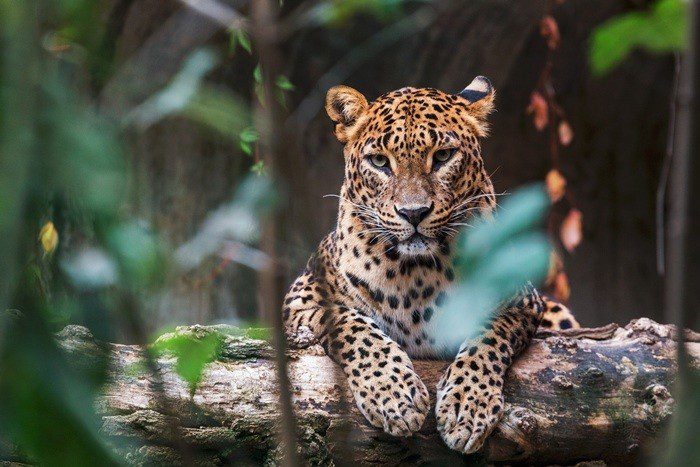
Seeing a leopard in the wild is a rare opportunity
Yala is known in the world over for its rich density of leopards among which the Sri Lankan Leopard otherwise known as the Panthera Pardus Kotiya is considered the most famous one. Currently considered as an endangered species and is one of the 8 subspecies recognised.
Best time to see: Though many sightings are seen during the early hours, one must be lucky to see these elusive leopards.
Quick Facts
- Scientific Name: Panthera Pardus
- Size: 3 ft. 5 in (head to body) and 2 ft. 6.5 in (tail)
- Weight: 56 kg (male) and 29kg (female)
- Diet: Carnivore
- Conservation Status: Endangered
2. Sri Lankan Sloth Bear
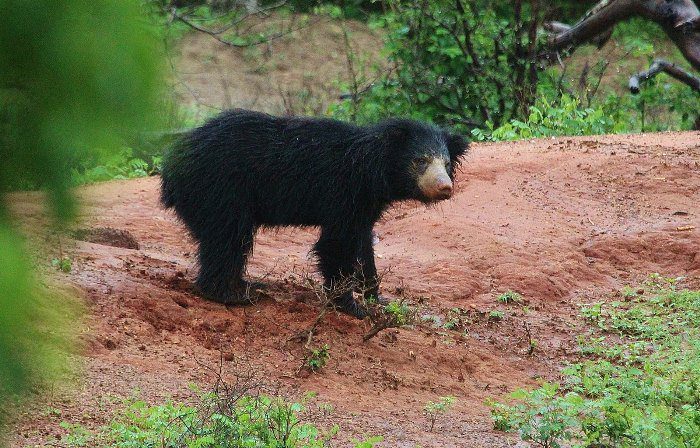
A Sri Lankan sloth bear as at Yala national park | Photo: Sandhillcrane [CC BY-SA 4.0], from Wikimedia Commons
Shaggy black coated Sri Lankan Sloth Bear is popular amongst animals in Yala National Park. Exclusively found in the subcontinent of India, these bears mainly consume insects. However, berries, roots, and nuts are also part of its meal. With only about 500 bears living in the wild, they have been declared vulnerable by IUCN Red List.
Best time to see: Sloth bear are shy creatures. There’s a better chance of spotting them in May/June when
Quick Facts
- Scientific Name: Melursus ursinus
- Size: 5 to 6 ft. (body) and 2.7 to 4.7 in (tail)
- Weight: 54 to 141kg
- Diet: Omnivore
- Conservation Status: Vulnerable
- Found in: Yala, Wilpattu, Wasgamuwa
3. Sri Lankan Elephants
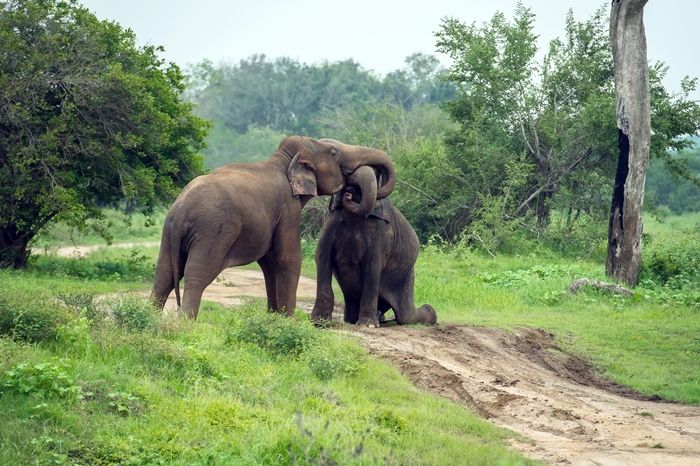
A friendly encounter of two wild elephants in Yala NP
Sri Lankan elephants are one of the three subspecies classified under Asian elephants and are also the darkest out of the lot. Due to various reasons like poaching, human-elephant conflict these giants are now an endangered species. Considered as the largest among the Asian elephants, they live up to 60 years of age. Herds of elephants can be spotted at Yala, while a visit to Minneriya and Udawalawa National Parks will also give you the opportunity to spot them.
Best time to see: Yala doesn’t have a dDawn and Dusk
Quick Facts
- Scientific Name: Elephas maximus
- Size: 2.4 to 2.7m (height)
- Weight: 2,000 kg to 5,400 kg
- Diet: Herbivore
- Conservation Status: Endangered
4. Toque Macaque Monkeys
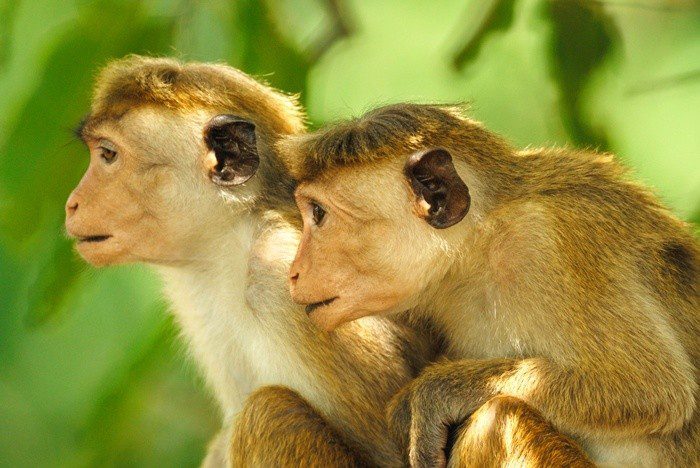
Always inquisitive. Two toque macaque monkeys (Rilawa) in Yala national park
Everyone’s guaranteed to spot the world famous Toque Macaque monkeys while on a safari in the Yala National Park. Endemic to Sri Lanka, these reddish-brown creatures locally known as “rilawa” is one of the most studied primates in the country.
Fun Fact: The popular Disneynature movie released in 2015, “Monkey Kingdom” featured a family of toque macaques.
Quick Facts
- Scientific Name: Macaca sinica
- Size: 35 – 53cm (body length)
- Weight: 4.0 – 5.5kg (male) and 2.5 – 4.5kg (female)
- Diet: Omnivore
- Conservation Status: Endangered
5. Fishing Cat
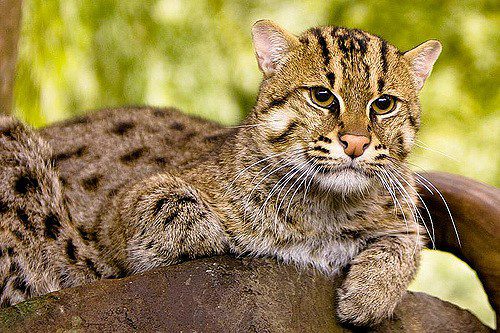
A Fishing cat. Although we couldn’t find a photo taken at Yala. | Photo Credit: kellinahandbasket , Flickr, (CC BY 2.0)
The beautiful felines got their name due to the habit of wondering around waterways and catching fish. These stripy creatures with a velvet coat can swim a long distance and sometimes swim underwater to catch their prey. Locally, they are known as “handun diviya” and can be spotted if you’re lucky!
Quick Facts
- Scientific Name: Prionailurus viverrinus
- Size: 66 – 76cm (head and body), 25 – 30cm (tail)
- Weight: 6.5 – 12kg
- Diet: Carnivore
- Conservation Status: Vulnerable







